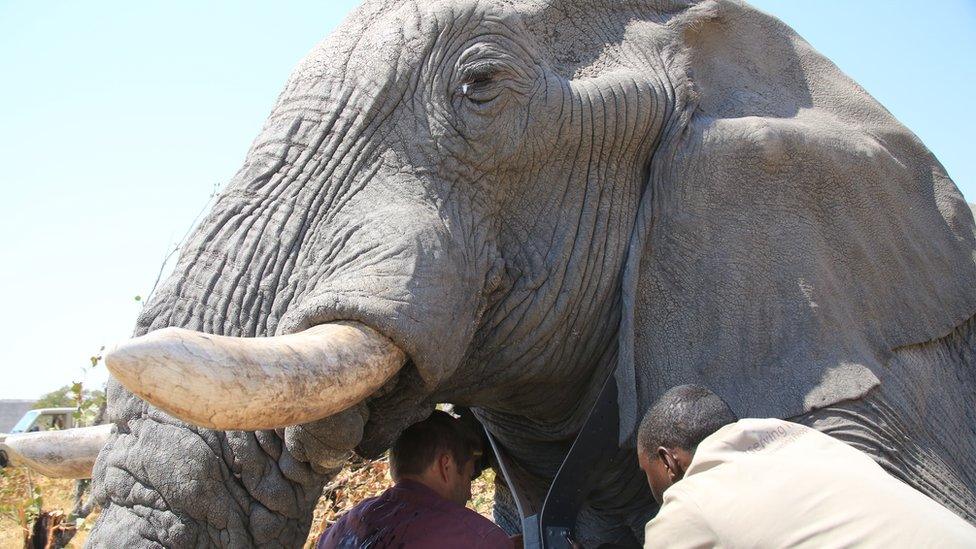New report confirms grim outlook for elephants
- Published
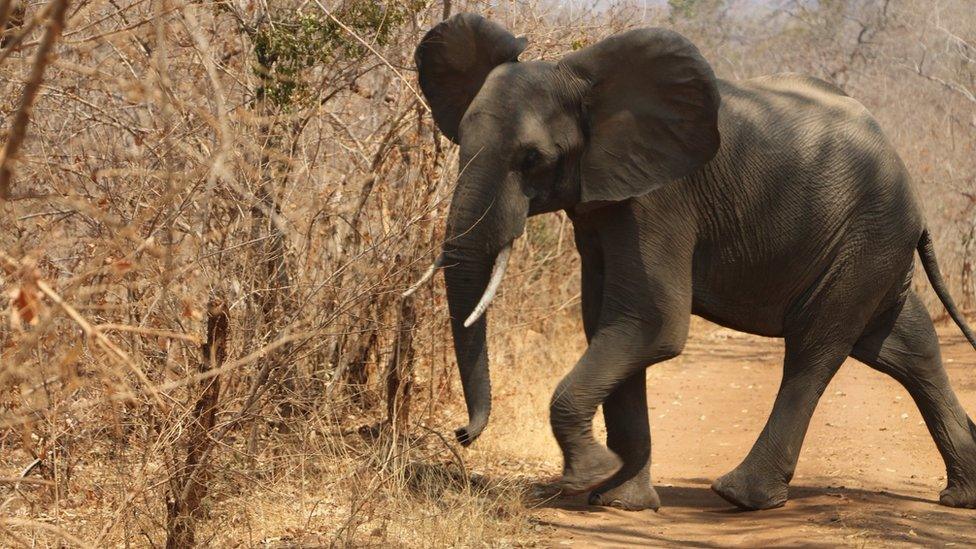
The illegal trade in ivory has seen elephant numbers plummet
Elephant populations in Africa have declined by around 111,000 over the past 10 years according to a new study.
The African Elephant Status report, external says that poaching is the main driver of the fall, the worst losses in 25 years.
However the authors say that long-term issues such as the loss of habitat also pose a significant threat.
The report has been presented at the Cites meeting which is considering new proposals on elephant protection.

War on elephants - Alastair Leithead, Africa correspondent
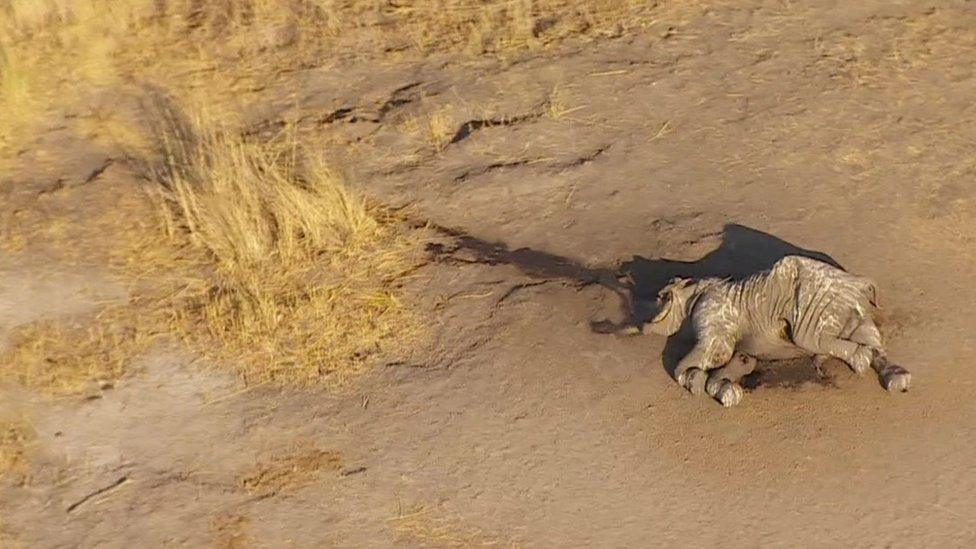
The growing demand for ivory in Asian markets means the illegal trade continues to threaten the future of elephants in Africa
Every year in Africa between 30,000 and 40,000 elephants are poached for their ivory, and it's thought there are only 400,000 left.
Even accounting for the newborns, this rate of killing calls into question whether these amazing creatures will still be around in a generation, especially as Africa's ever-increasing population is reducing the space for them.
Organised crime runs the ivory industry.
Extract from The War on Elephants; article on how the very existence of Africa's elephants is threatened by poachers
More from Alastair:

Wide range of sources
Figures published earlier this year in the Great Elephant Census, external indicated that African elephant populations had declined by around 30% over the past seven years.
This new study from conservation group IUCN incorporates this information but also uses data from elephant dung counts and individual observations amongst other sources.
The authors say the overall total for elephants in Africa is now around 415,000, although there may be an additional 117,000 to 135,000 in areas not systematically surveyed.
This represents a decline of some 111,000 from the report carried out in 2006.
Annual elephant population change, 2010-14
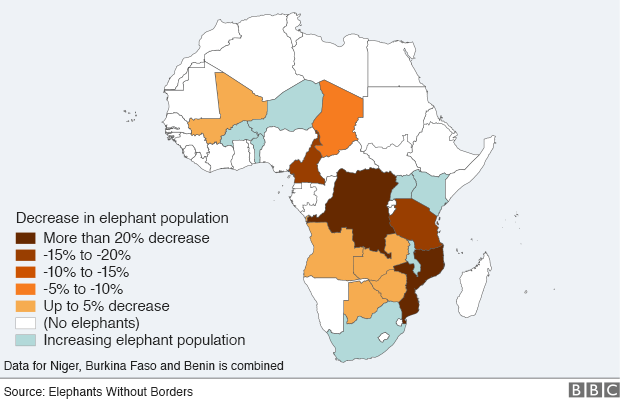
Poaching is the main driver of the drop. East Africa, the region most affected by killings for ivory, has experienced around a 50% reduction in numbers.
However it is not the only cause of concern to the authors.
"We are particularly concerned about major infrastructure projects that are cutting up the elephant ranges, this is a particular problem for road development in central and east Africa," said Dr Chris Thouless, one of the report's authors.
"These are all major issues that will have to be dealt with once the poaching crisis is over."
Community conservation
While report highlights the losses there are also some gains.
Elephant populations in South Africa, Namibia and Uganda have all increased. Elephant ranges have expanded in Kenya and Botswana, with community based conservation showing real success in Northern Kenya.
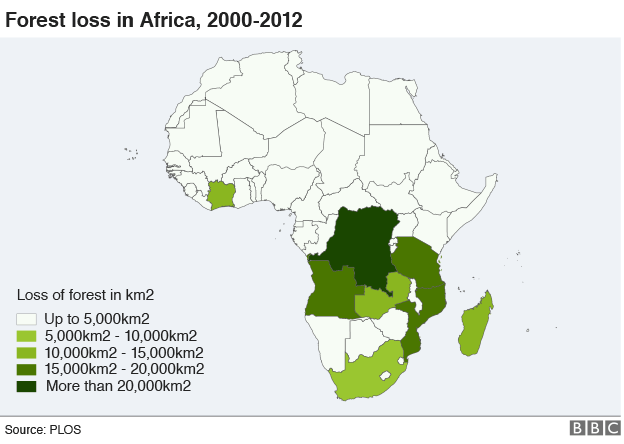
While these are positives, the overall picture is one of dramatic decline, fuelled by criminal activity that would decimate these giant creatures, if continued.
"Larger quantities of illegal ivory are leaving Africa than ever before," said Ginette Hemley from WWF.
"The transnational crime syndicates driving the slaughter must be dismantled, and consumer demand for ivory cannot persist if we hope to secure a safe future for elephants."
The report comes as the Cites meeting here in Johannesburg is facing significant division on how to handle the poaching crisis.
Talks on extra protections for elephants will begin on Monday with a number of countries led by Kenya seeking extra protection.
Others, including Namibia and Zimbabwe, are seeking to liberalise the safeguards and open up a trade in ivory. Another proposal here, which might garner more support, is aimed at ending all domestic markets in ivory. The meeting continues until 5 October.
Follow Matt on Twitter @mattmcgrathbbc, external and on Facebook.
- Published23 September 2016
- Published31 August 2016
